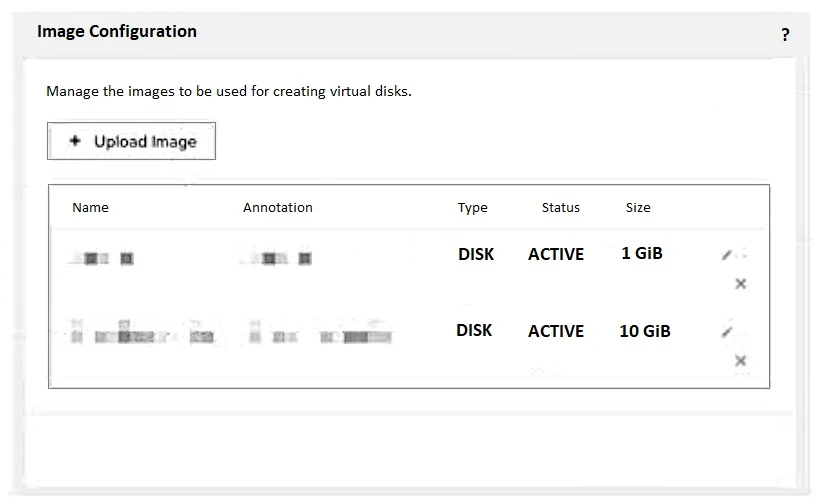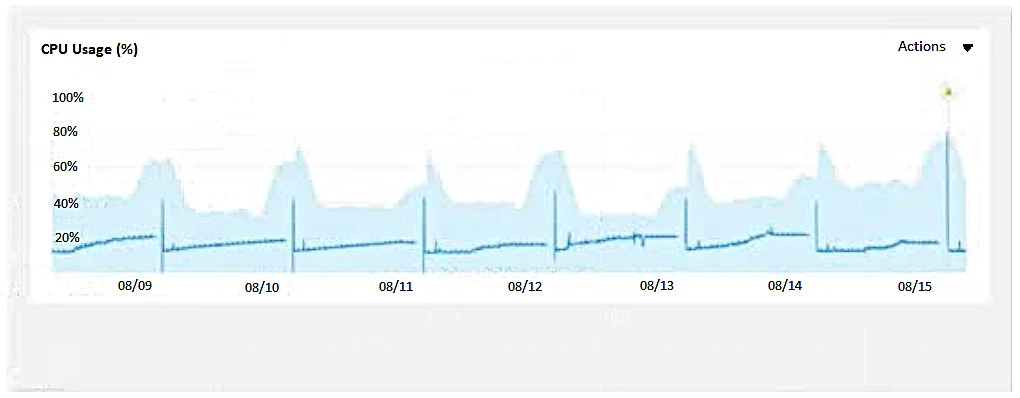A storage policy can be associated with a category. Categories are used as a means of grouping and applying policies, such as storage policies, to entities like VMs and Volume Groups. This way, you can manage the application of these policies more effectively by associating them with categories.

An administrator needs to update some images that were previously uploaded to their Nutanix cluster. While logged into Prism Element when trying to update the images, the update icon is not enabled.
What could be the cause for this behavior?
The update icon is not enabled because the images were imported into Prism Central. Once an image is imported into Prism Central, the ability to update the image is only available through Prism Central and not via Prism Element. This restriction ensures that image consistency and updates are managed centrally.

Why has an anomaly been triggered?
An anomaly has been triggered because the CPU usage crossed the blue band. The blue band in such graphs typically represents the expected range of values derived from historical data or predictive models. When the observed CPU usage value falls outside this band, it indicates a deviation from the norm, thereby triggering an anomaly.
What two options are available? (Choose two.)
To expand the Failure Domain level of a cluster, the available options are Data Center and Rack. These levels allow for the distribution of workloads and redundancy to ensure that failures at these levels do not result in a complete system failure. The Data Center level ensures that disaster recovery plans can be implemented across multiple locations, while the Rack level provides fault tolerance within the physical infrastructure of a single location.
Which bond mode should the administrator select?
To optimize for maximum single VM throughput on an AHV cluster, the best bond mode is Active-Active with Mac Pinning. This mode allows multiple network interfaces to be used concurrently, distributing the load while keeping the MAC address fixed, thus preventing any potential issues with port flapping and ensuring maximum throughput for a single VM.